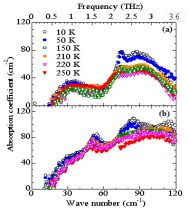Uncovering Polymer Dielectric Properties in Terahertz Frequencies
2012-0928-02

- researcher's name
-
about researcher OHKI, Yoshimichi Senior Research Professor (retired)
- affiliation
-
Faculty of Science and Engineering School of Advanced Science and Engineering
- research field
-
Electronic materials/Electric materials,Power engineering/Power conversion/Electric machinery
- keyword
-
background
Dielectric materials are substances with a wide energy gap. Electrically, they have insulant properties. Optically, they feature a short absorption edge wavelength. Based on the former property, dielectric materials are used for various materials, including insulating materials of devices and cables, condenser materials, and substrates of electronic components. It is hard to imagine that the importance of dielectric materials for these purposes will decrease. They are the foundational materials that support all electric and electronic equipment and devices.
In addition, optical-related technologies are increasing in importance day by day, not only in the high-tech industry, but also in our daily lives. In such an era, the latter property of dielectric materials, i.e., their short absorption edge wavelength, has begun to have critical significance. In other words, having a wide energy gap is extremely important for: optical waveguides, including optical fibers; light sources, such as lasers and LED, in edge wavelength regions; lens; and non-linear optical elements.
Terahertz waves are electromagnetic waves with frequencies between electricity and light. They are thus expected to become powerful tools for measuring and analyzing the former, the optical properties of dielectric materials, and the latter, the electric properties of dielectric materials.
summary
Our laboratory studies the electric and optical properties of dielectric materials. The types of dielectric materials we study are as follows:
・Polymer research, electronic device research, applied optics research
・Nuclear power and accelerator application research
application/development
・Establishment of THz spectroscopic spectrum database
・Development of non-destructive structure observation method for polymer insulating materials using THz waves
predominance
Excels in high resolution, detection of intermolecular interaction, and maneuverability.
purpose of providing seeds
Sponsord research, Collaboration research, Technical consultation
remarks
■Academic Awards: Many awards including the Institute of Electrical Engineers of Japan (IEEJ) Fellow; Consortium for Electric Power Technology Achievement Award; Professor Emeritus of Xi’an Jiaotong University; IEEJ Outstanding Achievement Award; IEEJ Fundamentals and Materials Society Special Award, Academic Contribution Award, M.Ieda Memorial Lecture Award; IEEE International Conference on Properties and Applications of Dielectric Materials; IEEJ Senior Member; U.S. IEEE DEIS Whitehead Memorial Award; and IEEJ Technical Committee on Dielectrics and Electrical Insulation (TC-DEI) Academic Contribution Award, Ieda Award
material
same researcher's seeds
-
 Uncovering Electric Properties for the Development of Practical Applications of Polymer Nanocomposites
Uncovering Electric Properties for the Development of Practical Applications of Polymer Nanocomposites -
 Development of New Waveguide-mode Sensors
Development of New Waveguide-mode Sensors -
 Creation of Highly Functional Light Transmission Materials by Ion Irradiation
Creation of Highly Functional Light Transmission Materials by Ion Irradiation
posted:
2014/05/21


